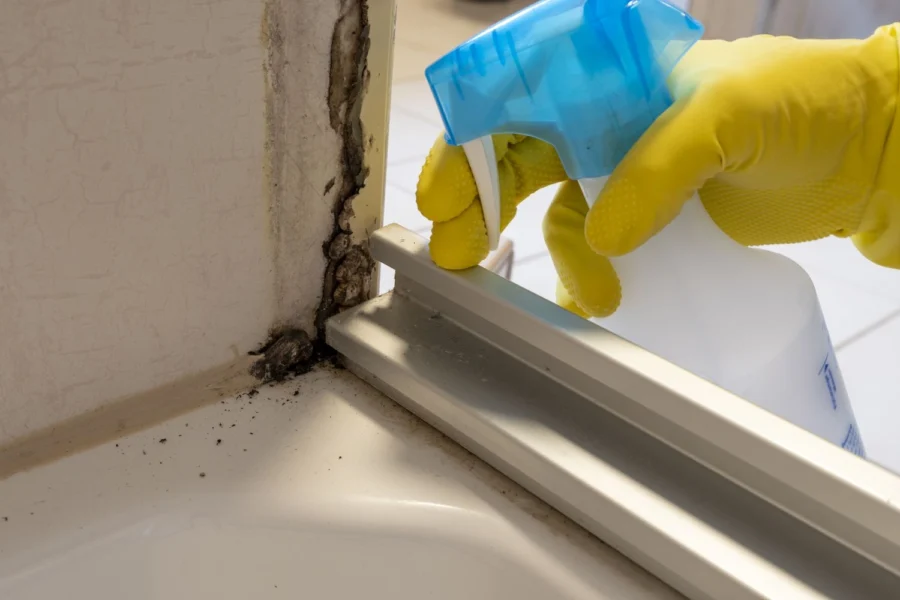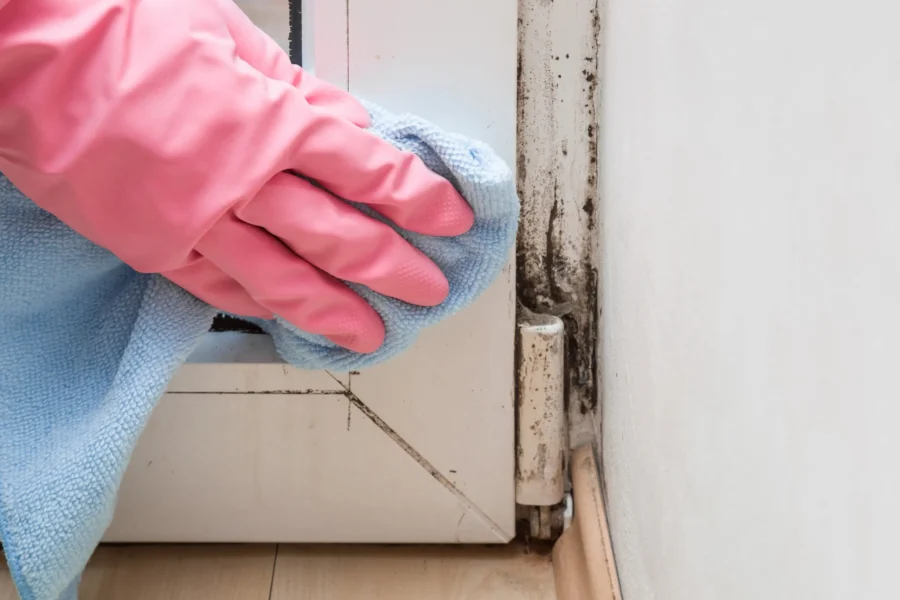How to Clean Mold Out of Your Window AC (And Breathe Easier)
Is your window air conditioner emitting a strange, musty smell or triggering your allergies? If so, you might be facing a mold problem, and you’re not alone. Mold thrives in the dark, damp environment of window AC units and can go unnoticed until it starts affecting your health and your home’s air quality. That leads many homeowners to ask: How to clean a window air conditioner mold? Fortunately, with some care and the right tools, you can eliminate mold, protect your health, and keep your unit running efficiently.
For homeowners who prefer expert care, companies like ProClean offer deep-cleaning AC services with our maid services Abbotsford that restore your unit to like-new condition. But whether you’re a DIY enthusiast or seeking professional help, this article will walk you through everything you need to know, from identifying mold to cleaning it, preventing its return, and choosing the right unit features to safeguard your home.
How Mold Develops in Your Air Conditioner
Mold loves to grow in damp, dark places, exactly the environment inside a typical window air conditioner. These compact units pull in warm air and cool it using evaporator coils, creating condensation. If this moisture doesn’t drain or dry out properly, it becomes a breeding ground for mold spores. Over time, the spores multiply and can infiltrate your indoor air every time you run the unit.
Window ACs are especially vulnerable because they often sit idle for months between seasons, giving mold a chance to grow unchecked. And once it takes hold, mold doesn’t just stay inside the unit, it can affect the air quality in your entire room.
Health Risks and Symptoms of Mold Exposure
Mold inside your AC isn’t just gross, it can seriously impact your health. When the unit blows air, it disperses tiny mold spores into your living space. Breathing in these spores may cause:
- Respiratory issues like coughing, wheezing, and shortness of breath
- Allergy symptoms including sneezing, itchy eyes, and runny nose
- Skin irritations such as rashes or hives
- Headaches and fatigue
- Aggravated asthma attacks or infections in immunocompromised individuals
Children, seniors, and those with asthma or compromised immune systems are especially at risk. That’s why proactive mold control is essential for a healthy home environment.
Causes of Mold Growth in Window AC Units
Several factors contribute to mold problems in window air conditioners:
- Moisture Buildup: Condensation from cooling processes can accumulate and linger, especially if drainage is poor.
- Dust Accumulation: Dust serves as a food source for mold spores, encouraging growth.
- Stagnant Air: Turning off your AC for extended periods allows moisture to sit and air to go stale.
- Dirty Filters: Clogged filters hold onto dust and moisture, creating the perfect place for mold to grow.
- Poor Maintenance: A lack of routine cleaning and inspection can allow mold to establish unnoticed.
Older units without humidity control features are more prone to developing mold due to less efficient airflow and moisture regulation.
Benefits of Regular Maintenance
Keeping your window AC unit clean is more than just a cosmetic upgrade, it has long-term benefits:
- Improved Efficiency: A clean unit doesn’t have to work as hard, resulting in lower energy consumption.
- Extended Lifespan: Dust and mold cause wear on parts, but regular maintenance keeps components in better condition.
- Cleaner Air: Removing allergens, spores, and debris from your AC results in cleaner, fresher air indoors.
- Cost Savings: Early identification of small issues helps avoid major repairs or replacements.
- Reliable Cooling: A well-maintained unit performs consistently through the hottest summer days.
Choosing the Right Unit and Settings
When shopping for a new unit or replacing an old one, choose an AC with humidity control settings. These models allow you to regulate the moisture in your room, which is key to preventing mold growth. Units with built-in sensors or dehumidifying functions are ideal for high-humidity environments.
Also, avoid shutting off the unit completely when you’re away. Using the “Auto” mode instead ensures that air continues circulating while still conserving energy. Continuous airflow dries out moisture and keeps mold from settling in stale air pockets.
Tools & Supplies Needed for Cleaning
Before you begin cleaning your AC, prepare these items:
- Personal Protective Equipment: Gloves, face mask, and goggles
- Screwdriver: To remove panels and access interior parts
- Soft brush or old toothbrush: For scrubbing
- Vacuum with brush attachment: To remove dust and debris
- Bucket & cloths: For cleaning and drying
- Bleach solution: ½ cup bleach, 1 tablespoon dish soap, 3 gallons hot water
- Optional: Coil cleaner, fin comb (to straighten bent metal fins), spray bottle for applying solutions
How to Clean a Window Air Conditioner Mold?
Follow these steps for a thorough clean:
- Unplug the Unit: Safety first. Remove the unit from the window and place it on a work surface or outdoors.
- Disassemble: Take off the front grille and remove the air filter.
- Clean the Filter: Wash the reusable filter in hot soapy water or a bleach solution, scrub it gently, and let it air dry.
- Vacuum the Interior: Use a brush attachment to remove dust, dirt, and loose debris inside the unit.
- Scrub with Bleach Solution: Dip a cloth or brush in the bleach mix and scrub moldy areas. Let the solution sit for 10 minutes to disinfect.
- Rinse and Dry: Wipe down all parts with a damp cloth and allow them to dry completely, preferably in a well-ventilated space or under a shaded outdoor area.
- Reassemble: Once dry, put the unit back together and reinstall it in your window.
Recommended Cleaning Frequency
- Filter: Clean monthly during active use.
- Interior: Clean at the start and end of each season.
- Professional Maintenance: Schedule at least once a year, especially for deep cleanings or older units.
Mold Prevention Tips
Proactively reduce mold risks with these practices:
- Monitor humidity indoors using a hygrometer.
- Use Auto Mode to prevent stagnant air.
- Clean filters regularly and vacuum the grille and vents.
- Wipe down dust on and around the unit.
- Cover the unit when not in use to keep out debris.
- Install a HEPA air purifier to capture airborne spores.
Identifying Mold in Your Unit
If you suspect mold, look for:
- Black, green, or white patches on the filter, vents, or grille
- Musty or earthy odors when the AC is running
- Increased allergy symptoms when the unit is on
- Visible dust buildup and poor airflow
If these signs appear, immediate cleaning is necessary to prevent further health risks.
Is it Safe to Run an Air Conditioner with Mold?
No, it’s not safe. Operating a mold-infested air conditioner pushes spores into the air you breathe, potentially causing:
- Respiratory infections
- Asthma flare-ups
- Chronic allergic reactions
- General discomfort and fatigue
Until the unit is properly cleaned, running it may worsen symptoms and spread mold throughout your home. In some cases, the mold may be so severe that professional cleaning, or even unit replacement, is necessary.
Fast Five: Key Steps to Prevent Mold Growth
- Humidity Control: Choose units that regulate moisture.
- Consistent Airflow: Use the “Auto” setting to prevent air stagnation.
- Routine Cleaning: Maintain filters, coils, and vents regularly.
- Dust Management: Vacuum often and wipe down dusty surfaces.
- Pro Inspections: Hire experts like ProClean to deep clean and diagnose problems.
Final Thoughts
Mold in your window AC isn’t just a nuisance; it’s a health hazard. With routine maintenance, careful cleaning, and the right unit settings, you can stop mold in its tracks and enjoy cleaner, healthier air. Whether you’re DIYing or hiring a pro, consistency is the key to staying mold-free.
Breathe Cleaner, Live Healthier
If mold has taken hold in your AC or you want peace of mind that your system is clean, ProClean is here to help. Our trained technicians perform deep cleanings that restore your unit’s performance while eliminating harmful spores.
Don’t wait until your allergies act up or your AC breaks down. Schedule a visit today.
We offer flexible maintenance plans, fast turnaround, and expert mold removal services tailored to your home. Your air conditioner should help you breathe easier, not make you sick.
Contact ProClean now and start enjoying healthier air today, tomorrow, and all year round.
Follow us on our socials here:
Find out more articles that can help you below:
How to Clean Mould From Windows
How Do Companies Clean Air Ducts? A Behind-the-Scenes Look




